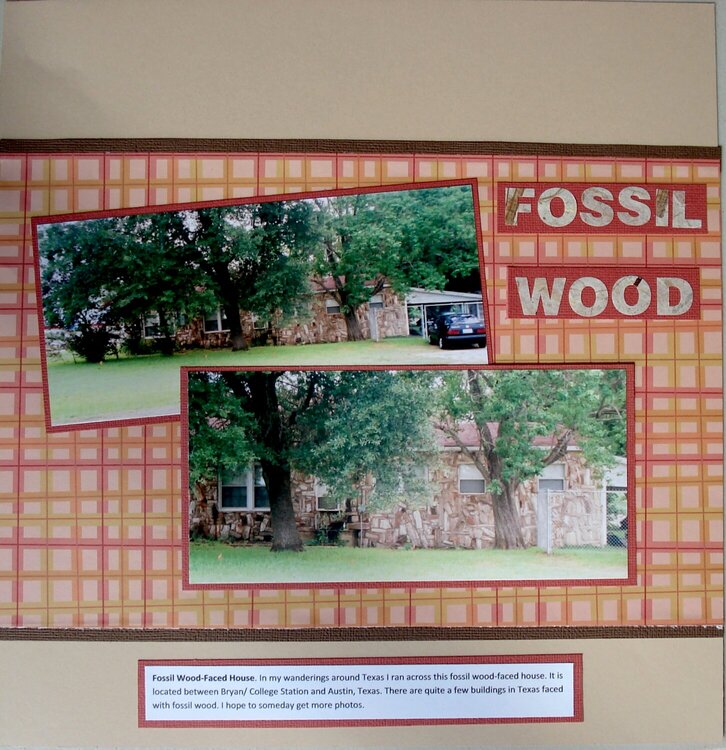

 Give a Cheer
Give a Cheer
A house construced using Texas fossil wood. There are buildings like this scattered across Texas and I hope to take more photos to add to my "rock-related" theme.
Fossil wood is formed in two ways: replacement or perminineralization. Perminineralization is the first step of replacement.
Replacement
Replacement takes place when water dissolves the original hard parts and replaces them with mineral matter. This chemical action may take place slowly, reproducing the microscopic structures of the original organism. Bone, shells and wood are often well preserved in this manner. The most common replacement minerals are calcite, silica, pyrite and hematite. When the original hard parts are replaced quickly they often loose all trace of their original structure, leaving the original shape, but no detail. Agatized woods are often preserved in this manner, (agate is a form of quartz).
Permineralization
Permineralization takes place when ground water carrying dissolved minerals infiltrates the microscopic pores and cavities in bone, wood or shell. The minerals being deposited produce stony fossils that still contain a good deal of their original solid material. Bones, teeth and many marine organisms are preserved in this way. The fossil wood from the Petrified Forest of Arizona are a famous example of this type of preservation.
These processes require the wood or material to be quickly buried in an oxygen-free environment where rotting will not take place. Texas fossil woods were most-often buried by volcanic ash and mud from the west-Texas volcanic field. They are generally found in a sweeping arc that was a long-ago gulf coast shoreline that roughly mimics today's coastline a hundred-miles inland.
No products have been added to this project.
Thanks for spreading positivity!
September 19, 2010
September 17, 2010
September 16, 2010
September 15, 2010
September 14, 2010
September 14, 2010
September 13, 2010
September 13, 2010
September 13, 2010
September 13, 2010
September 13, 2010
September 13, 2010
September 12, 2010
September 12, 2010